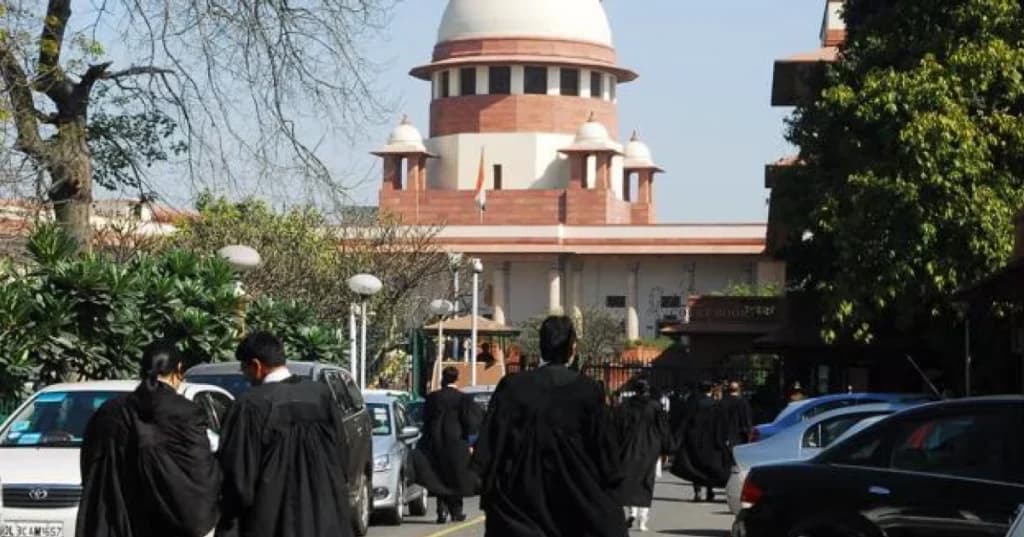In a landmark decision, the Supreme Court has underscored that an omission in a First Information Report (FIR) can play a crucial role in determining the credibility of a witness’s testimony. In a murder case, the court observed that when a complainant—purportedly an eyewitness—names only one accused despite witnessing three individuals involved in the crime, such selective omission raises serious doubts about the reliability of the evidence. This observation, the Court noted, is a significant factor under Section 11 of the Evidence Act.
Read Also:- Strong Suspicion Alone Is Not Enough: Supreme Court Acquits Defendant in Murder Case Due to Lack of Evidence
The case in focus, State of Uttar Pradesh v. Raghuvir Singh, involved a tragic incident that occurred on the night of 28 August 2004 in Ghaziabad. The deceased, who worked as a driver for a private transport company, was fatally attacked near a tubewell. According to the FIR filed by his father, the eyewitness account indicated that three persons were involved in the assault. However, only the name of Raghuvir Singh appeared in the FIR, while the other two accused—who were juveniles—were omitted. This omission prompted the Court to re-examine the entire chain of evidence.
“If he claims to be an eye-witness to the incident and is said to have witnessed three persons known to him assaulting his son, then what was the good reason not to name the other two accused? This omission assumes significance and is a relevant fact under Section 11 of the Evidence Act.”
Read Also:- Supreme Court: Meticulous Examination Needed in Cases Where FIR Was Against Unknown Persons
This pointed remark by the bench highlighted the inherent inconsistency in the eyewitness testimony. The court further referred to the established precedent in Ram Kumar Pandey vs. State of Madhya Pradesh (AIR 1975 SC 1026), emphasizing that an FIR is expected to contain a comprehensive account of all observed facts. The failure to mention all accused persons, the Court argued, undermines the probability of the complainant’s entire narrative being true.
A detailed review of the evidence revealed several critical aspects:
Delay in FIR Filing: Although the incident occurred at around 10:30 p.m. on 28 August 2004, the FIR was registered only after 14 hours, casting further doubt on the accuracy and reliability of the initial report.
Eyewitness Testimony vs. Documentary Evidence: The eyewitnesses’ statements, which conflicted with the contents of the FIR, created a scenario where the prosecution’s case became less convincing. The Court stressed that any omission in such critical testimony cannot be overlooked.
Impact on Prosecution’s Case: With the FIR missing the names of two additional accused, the prosecution’s account was rendered highly improbable. This led to the acquittal of the accused, a decision that was later upheld by the Supreme Court.
The bench, comprising Justice J.B. Pardiwala and Justice R. Mahadevan, was firm in its conclusion that the omission in the FIR was not an inconsequential error but a pivotal factor in assessing the veracity of the prosecution’s evidence. As a result, the Court dismissed the appeal filed by the State of Uttar Pradesh, thereby affirming the acquittal of Raghuvir Singh.
Case Title: State of Uttar Pradesh v. Raghuvir Singh
Appearance:
For Appellant(s) : Mr. K Parmeshwar, Sr. A.A.G.(NP) Mr. Shreeniwas Patil, Adv. Dr. Vijendra Singh, AOR Mr. Deepak Goel, Adv. Ms. Apurva Aggarwal, Adv. Mr. Shailesh Sharma, Adv.
For Respondent(s) : Mr. Rajul Bhargava, Sr. Adv. Mr. Kartikeya Bhargava, AOR Mr. Jasir Aftab, Adv.














